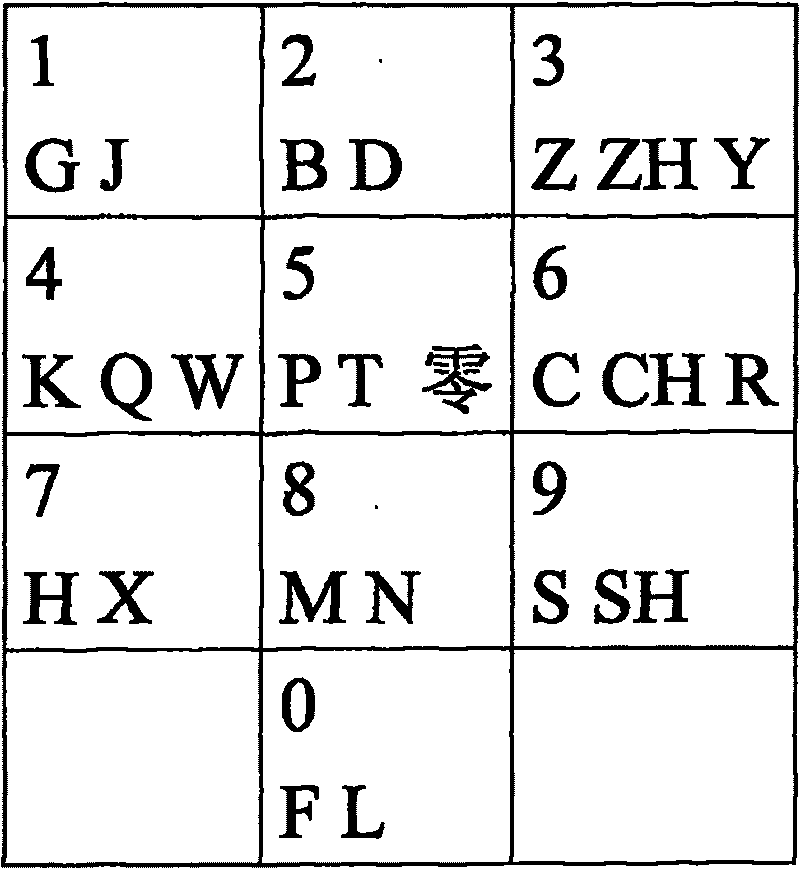Method for inputting Chinese character on numeric keyboard by Chinese character radicals phrase alliteration code
A digital keyboard and radical technology, applied in the input/output process of data processing, electrical digital data processing, instruments, etc., can solve the problems of slow speed and many input strokes
- Summary
- Abstract
- Description
- Claims
- Application Information
AI Technical Summary
Problems solved by technology
Method used
Image
Examples
Embodiment Construction
[0047] Below in conjunction with example concrete description;
[0048] Numerical keyboard: the ten keys of the numerical keyboard are designed as initial consonant keys that conform to the habit of recognizing and reading Chinese pinyin (see accompanying drawing 1). Conforming to the habit of recognizing and reading Chinese Pinyin means that the initial consonants of Chinese Pinyin are read in sequence according to the initial consonant table of the Chinese Pinyin scheme:
[0049] b p m f; d t n l; g k h; j q x; zh ch sh r; z c s;
[0050] Each group of initials is arranged vertically on the numeric keyboard, and the codes of the key positions of each letter are:
[0051] 1 g j; 2 b d; 3 zh z; 4 k q; 5 p t; 6 ch c r; 7 h x; 8 m n; 9 sh s; 0 f l;
[0052] Special arrangements are: y is regarded as an initial consonant, on the 3rd key; w is regarded as an initial consonant, on the 4th key; characters without initials are designed as zero initials, and the zero initial is on t...
PUM
 Login to View More
Login to View More Abstract
Description
Claims
Application Information
 Login to View More
Login to View More - R&D
- Intellectual Property
- Life Sciences
- Materials
- Tech Scout
- Unparalleled Data Quality
- Higher Quality Content
- 60% Fewer Hallucinations
Browse by: Latest US Patents, China's latest patents, Technical Efficacy Thesaurus, Application Domain, Technology Topic, Popular Technical Reports.
© 2025 PatSnap. All rights reserved.Legal|Privacy policy|Modern Slavery Act Transparency Statement|Sitemap|About US| Contact US: help@patsnap.com



